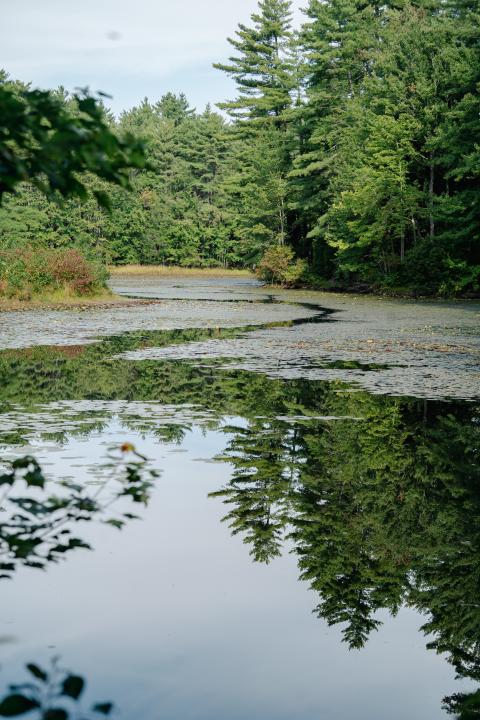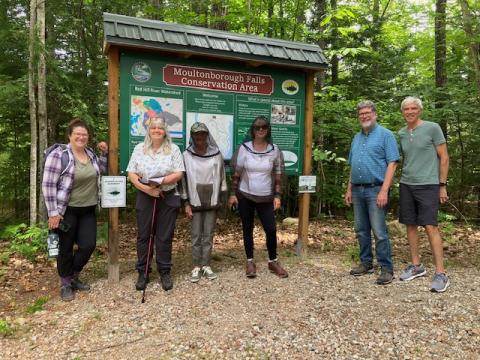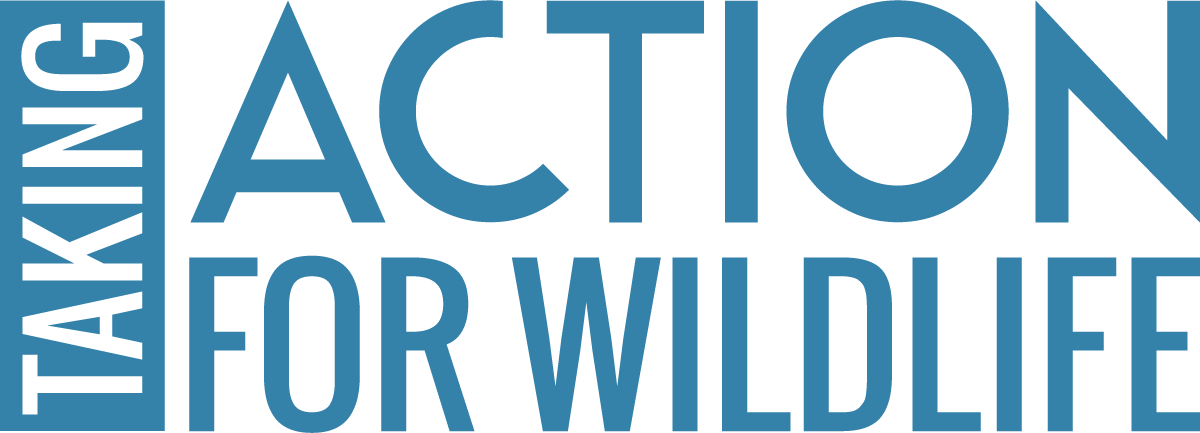2025 TAFW Community Assistance Program Update
This summer and early fall the Taking Action for Wildlife Team has been working with 4 communities through our Community Technical Assistance Program. The four communities – Chester, Lebanon, Moultonborough, and Raymond – are all pursuing a specific project in their community to benefit wildlife. They are doing impressive work, that we hope will show other communities what is possible. Here is an update on their work so far:
Chester

Wason Pond in Chester is conserved and stewarded by the Chester Conservation Commission.
The Chester Conservation Commission is in the process of updating their Natural Resources Inventory and they have a long-term goal of increasing the amount of conservation land in town. They identified a need build more awareness of the work they do as a Conservation Commission among both community members as well as fellow municipal boards in town (planning, zoning, etc). To help address this need, they are working to create a brochure to explain what the Conservation Commission does, highlights key natural resources in Chester, features two conservation properties in town, and includes information about how people can get involved. They are also developing a 10-15 minute presentation that will be given to the Chester Zoning and Planning Boards to share more about their work and help develop a stronger working relationship. The content for the brochure and presentation create a shared language and vision for the Conservation Commission to use when they engage with other boards and community members. They are working together with Taking Action for Wildlife staff to finalize the content of the brochure and presentation. We hope their brochure might serve as an example for other NH conservation commissions to better share their work with their communities.
Lebanon
The Lebanon Conservation Commission is interested in increasing protections for vernal pools in their community. They have a wetlands ordinance in place, but it does not specifically mention vernal pools, which are often overlooked. They would like to update the ordinance to include protections for vernal pools. As a first step, they are curious to know what other towns are doing to protect vernal pools, but there is not a current, comprehensive list of different town wetland or vernal pool ordinances. The Taking Action for Wildlife Team will work with them to collect information on what towns across New Hampshire and in other New England states are doing to protect vernal pools. With this information, the Conservation Commission will work together with their town planners to develop new ordinance language to better protect these small, but important wetland wildlife habitats.
Moultonborough

Members of the Moultonborough Conservation Commission visit Moultonborough Falls Conservation Area with the Taking Action for Wildlife team.
The Moultonborough Conservation Commission along with the Moultonborough Heritage Commission reached out to Taking Action for Wildlife regarding their Moultonborough Falls Conservation Area. They had recently added new parcels of land to the property, and wanted to make sure that their existing trail network did not negatively impact wildlife and habitats, while also exploring whether the trail should be extended to new parts of the property to highlight areas of natural resource and historical significance. Conservation and Heritage Commission members walked the property together with Taking Action for Wildlife Team members to assess and map the trail, and discuss potential opportunities for educational signage. Taking Action for Wildlife team members overlaid the trail map with NH Fish and Game’s Trails for People and Wildlife mapping tool, and were able to help the Conservation Commission determine the existing trail network was well-placed and likely did not need to be extended into new areas. We continue to work together with the Conservation Commission to identify themes and topics for future educational signage on the property.
Raymond
The Raymond Conservation Commission requested assistance to complete an audit of their existing zoning regulations/ordinances to identify opportunities for improving protections for wildlife and wildlife habitat in their community. Taking Action for Wildlife team members reviewed core elements of a land use planning update strategy, including 1) using the most recent data, science, and best practices, 2) understanding current community natural resource priorities, 3) collaboration with other town committees, and 4) garnering community support through outreach and education. With these elements in mind, we reviewed State Wildlife Action Plan maps – including priority habitats, wildlife corridors and habitat blocks - in context of their current conservation focus areas. The Conservation Commission identified water quality and wildlife corridors as the two natural resource priorities to focus their efforts on. They have begun conversations with Raymond’s Director of Community Development and Planning to assist them in reviewing current zoning, planning and site regulations and identifying potential changes to improve protections for wildlife habitat and water quality and establishing a cross-committee working group to draft changes.



